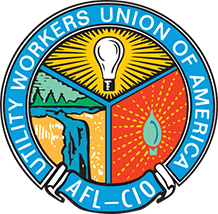SECRETARY-TREASURER’S REPORT – Michael Coleman, Secretary-Treasurer
Key Filing Compliance Requirements For Affiliated Local Unions and Councils
On behalf of the National Union, I meet yearly with representatives from the U.S. Department of Labor’s Office of Labor-Management Standards (OLMS) to discuss the annual results of the OLMS review under the Voluntary Compliance Partnership (VCP) program. The VCP is a strategic effort involving 43 international and national unions with the objective of supporting and enhancing the compliance of local union and other affiliates throughout the country. The VCP program focuses on various compliance objectives of the unions, and specifically compliance relating to timely LM-2, 3, and 4 reporting, utilization of the electronic forms system (EFS), bonding coverage and other items examined in OLMS audits. I have also been meeting with local unions to conduct financial training to share information and best practices. Below are several key components for proper filing and reference. Please do not hesitate to contact the National Office for guidance or assistance.
DOL Filing Requirements
What Form do you file?
Depending on size of organizations receipts, there are 3 potential forms your union would be required to file. Form LM-2 is filed if your union’s total annual receipts were $250K or more, Form LM-3 is filed if the organization’s total annual receipts were $10K or more, but less than $250K, and Form LM-4 is filed if your union’s total annual receipts were less than $10K.
When is the Form due to the DOL?
There are no extensions on the due date for either of the 3 forms listed above. The Form LM-2, LM-3 and LM-4 are all due 90 days after year end and they must be filed electronically. Even though some paper reports were accepted last year, the DOL representatives that I met with explicitly indicated that paper reports filed will be rejected going forward and the filing will be considered delinquent until it is electronically filed.
Fidelity Bonding Requirements
The LMRDA provides that any person who handles union funds must be bonded for at least 10% of the funds handled during the previous fiscal year up to a maximum of $500,000. Your accountant can assist you in determining the amount of bonding required, and the coverage must be computed at the start of each fiscal year. Any increase in coverage must be promptly obtained. The National Office can obtain the coverage for your local union or council through the national policy; however, each affiliate must provide the National Office with the amount of coverage needed annually. If you are not certain of the amount of bond coverage, please confirm the information with my office prior to reporting and filing your LM report.
IRS Filing Requirements
What Form do you file?
Depending on size of union’s assets and receipts, there are 3 potential forms organizations would be required to file. 990-N (Postcard) if your union normally has gross receipts of $50K or less; 990-EZ if your union has gross receipts less than $200K and total assets at the end of the tax year less than $500K; and the full Form 990 which is filed if either gross receipts are greater than or equal to $200K or total assets are greater than or equal to $500K at the end of the tax year.
When is the Form due to the IRS?
All forms are to be filed electronically and for organizations that have a calendar year end of December 31 the Form 990, 990-EZ, or 990-N is due May 15th (4 and ½ months after year end). Organizations can apply for an automatic six month extension which will extend the time to November 15th
(10 and ½ months after year end). Steep monetary penalties may apply for late filers.
Ramifications for Non-Compliance
In addition to monetary penalties, if you do not file for three consecutive years, your union’s tax exemption will be automatically revoked and you will be considered a taxable entity and possibly be subject to income taxes similar to for-profit entities. To apply for reinstatement to be considered a not-for-profit, you must go through a fairly lengthy application process — so make sure to comply with the annual filing requirements.

